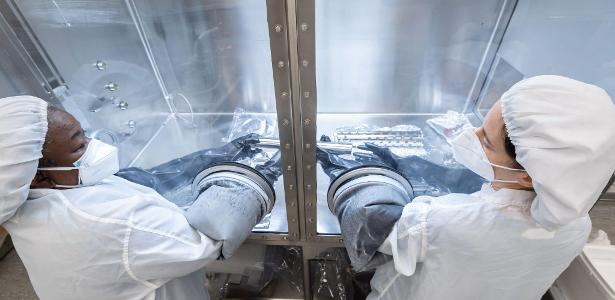
A metal tube containing samples of lunar soil has been sealed since 1972, when it was collected by the Apollo 17 mission. NASA Will finally open it.
The 35 cm long, 4 cm diameter, vacuum-sealed container contains rocks and dust taken from a landslide deposit known as the Taurus-Littrow Valley in the region of the Moon. Scientists hope that lunar gases may also have been deposited inside.
When the sample in question was taken in December 1972 by astronauts Eugene Cernan and Harrison “Jack” Schmidt, there weren’t many resources for analysis.
But the team believed that in the future, science and technology would continue to advance, even if there were no more manned missions to the Moon – Apollo 17 was the last time humans set foot on Earth’s natural satellite. So, it untouched some of the 2,196 samples collected over the program’s six visits, between 1969 and 1972, to be studied over the next decades.
Now, with modern equipment, NASA has already begun a long and meticulous process to open the tube, which in partnership with ESA (European Space Agency) could take several weeks. A manifold-type device called the “Apollo Can Opener” was developed specifically to pierce it, without gas escaping or contaminating the contents.
Only two tubes from the Apollo program were vacuum-sealed by astronauts on the Moon, at the time of collection – the others were sealed in the usual way without being fully sealed. This is the first of these two “specials” to be opened. In addition, only three other untouched specimens remain (one sealed and two “normal”).
The gems are housed in a reinforced structure at the Johnson Space Center in Houston, with a second layer of vacuum and a controlled atmosphere.
valuable gases
To collect this sample, the astronauts basically burrowed the tube into the ground – and reported that it got too cold. For NASA, this is a sign that volatiles are also trapped, such as ice and carbon dioxide, that would evaporate at normal temperatures.
Removing the gases is a challenge for scientists, as the volume must be minimal – so use caution when opening. If they are successful, they will have a unique chance to study them, with very sensitive spectrometers able to measure and analyze individual molecules. It can help to know the geological history of the Moon and the evolution of the Solar System.
In a few months, the rocks in the sample must be broken up, so that different teams can analyze them. An interesting question is where it was taken from: a landmass field. But if it doesn’t rain on the Moon, how does a landslide happen? Researchers hope to find another answer.
The study will also help prepare astronauts for a future Artemis mission, which will take the man (and the first woman) back to the Moon. They will collect new samples of soil and gas in large quantities to compare them with old ones and advance the understanding of lunar changes.
According to the space agency, the first landing on our satellite is not expected until 2026, after several delays. There are plans to establish a permanent lunar base in the long term.





